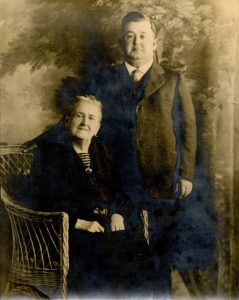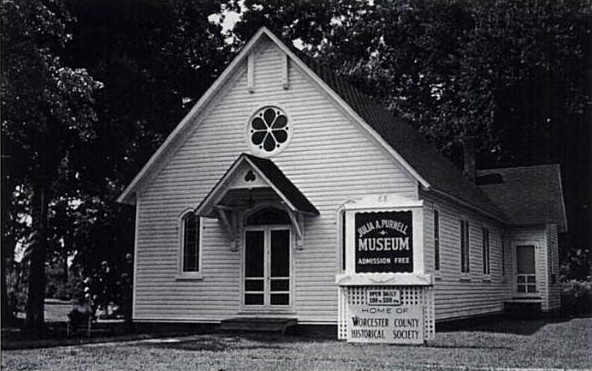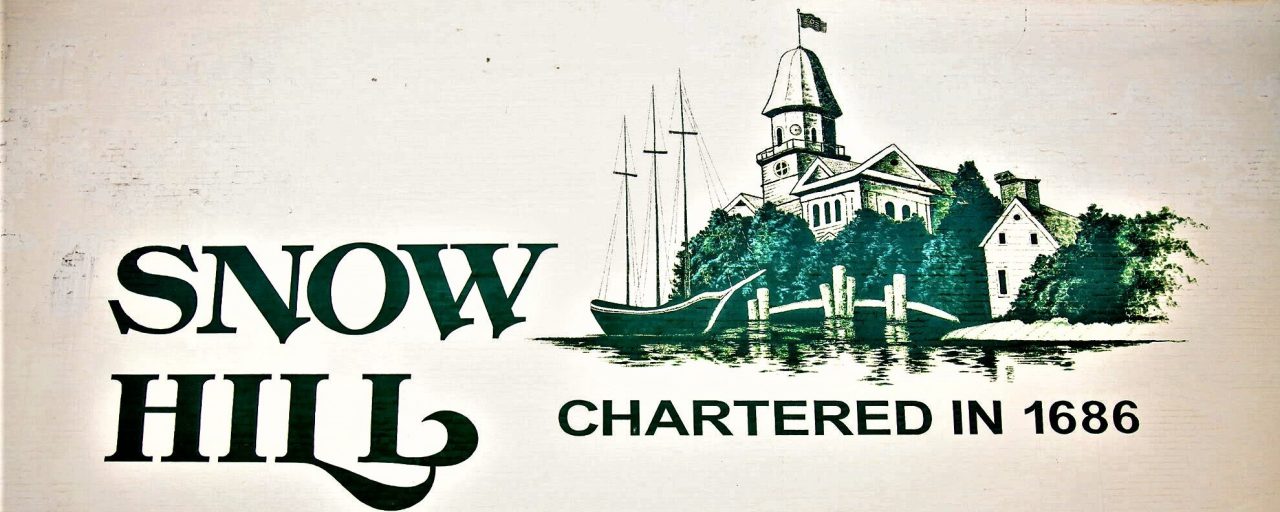About the Julia A. Purnell Museum
 Julia LeCompte was born in Snow Hill, Maryland in 1843. She married William H. Purnell, a storekeeper, in 1869 and had two sons. She created many types of needle art throughout her life, including quilts, cross-stitch and embroidery. At the age of 85, Julia Purnell began embroidering scenes of homes, churches, and gardens in Snow Hill. She entered her art into hobby and craft shows. Her works won the New York and Philadelphia Hobby Shows, and took the Grand Prize at the Wicomico Farm and Home Show. Purnell’s art became well known and in 1941 she was inducted into the National Hobby Hall of Fame.
Julia LeCompte was born in Snow Hill, Maryland in 1843. She married William H. Purnell, a storekeeper, in 1869 and had two sons. She created many types of needle art throughout her life, including quilts, cross-stitch and embroidery. At the age of 85, Julia Purnell began embroidering scenes of homes, churches, and gardens in Snow Hill. She entered her art into hobby and craft shows. Her works won the New York and Philadelphia Hobby Shows, and took the Grand Prize at the Wicomico Farm and Home Show. Purnell’s art became well known and in 1941 she was inducted into the National Hobby Hall of Fame.
Julia Purnell’s son, William, was proud of her art and in 1942 he joined his mother in founding the Julia A. Purnell Museum. The museum housed many of Julia Purnell’s works (many others were given away to admirers), tools she used, and memorabilia from her long life.
Julia Purnell died 2 months after her 100th birthday, in December 1943. The museum continued to grow as William added artifacts to the collection. He sought donations from the towns people who gladly gave their old tools, toys, machines, cooking utensils, clothing, books, and curios — along with the stories behind them. William continued to accept donations until 1957 when he gifted the museum to the Town of Snow Hill. The museum was no longer a tribute to one woman’s art, but had become a repository for the memories of the entire town.
Today, the Julia A. Purnell Museum offers exhibits interpreting many aspects of Worcester County’s history. A time-line parallels the history of the County with that of the nation as a whole. The People of the Pocomoke exhibit informs visitors about the history of regional Native Americans. A “general merchandise” store exhibit welcomes guests back to a time when the community was built around the local general store. The Victorian Era is also represented, complete with displays of clothing, jewelry, toys, and household items. Machines illustrate the many “modern” improvements that took place during Julia Purnell’s lifetime. With such a wide variety of exhibits, the Julia A. Purnell Museum offers something for everyone.
Built in 1891, the Purnell Museum building was originally the St. Agnes Catholic Church. It was part of the Wilmington Archdiocese, but was never very successful. At its peak, it consisted of 18 members. The church closed around 1900, and the building was used for public functions until the Purnell Museum was relocated there in 1957.

